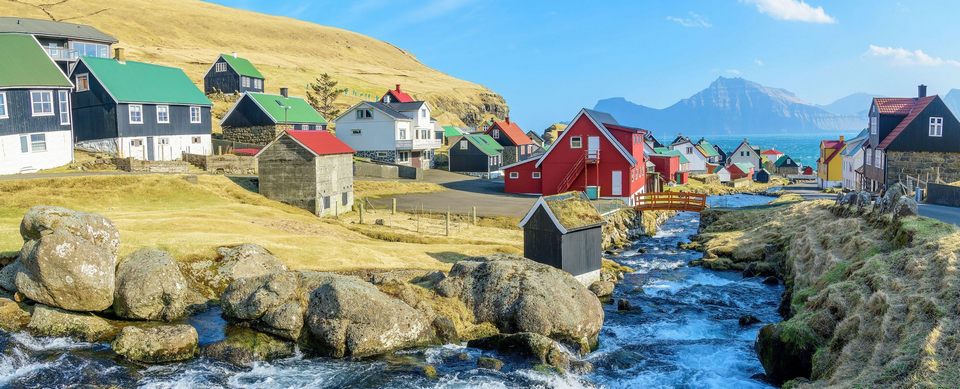
You may recall that well-known line, spoken by the Water Rat who said, “Believe me, my young friend, there is nothing – absolutely nothing – half so much worth doing as simply messing about in boats.” Rat is addressing his “young friend” Mole, and they are two of the main characters in the children’s novel The Wind in the Willows. Written by Kenneth Grahame and first published in 1908, the stories were originally created for the author’s young son Alastair. They describe various entertaining events and misadventures in the lives of the four main characters, Mole, Rat, Mr. Toad and Mr. Badger. Naturally, all the animals speak perfect English.
When I was a small child living on a small grey island far, far away, my mother used to read me stories from The Wind in the Willows, until I was old enough to read them myself. I have that same book in front of me. It’s the 1932 edition, which belonged to my mother and is illustrated with charming pen sketches by Ernest H. Shepard, who incidentally, also provided the drawings for A. A. Milne’s much-loved Winne-the-Pooh books. It’s not a “kiddie-book” of course, for many of the ideas and the way they are explained are remarkably sophisticated. As a child, I found the stories captivating; some of them intensely moving. And I still do, for the luminous prose and profound symbolism that pervades some of the stories make it a classic children’s book that can also be enjoyed by children of all ages.
As a boy, I was also fond of messing about in boats. Our family lived a stone’s throw from the beach. A local man, Mr. Phillips hired out wooden rowing boats selected from his imposing fleet of six. Most afternoons during the long summer months of my childhood, we’d hire a rowing boat from Mr. Philips’s and potter about the harbour, rowing over to any ships that looked interesting. Mr. Philips had only one arm, but I it would have seemed impertinent and insensitive to ask where the other one went. It was rumoured that he’d lost it during military service somewhere. He was highly skilled at moving his boats around using a single oar over the stern, a useful technique evidently known as sculling.
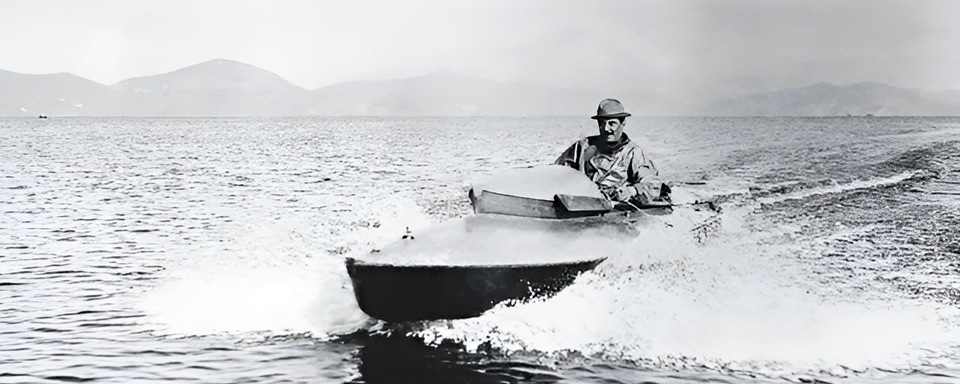
The chain-smoking Italian composer Giacomo Puccini was a boat enthusiast, though his preference was for something more sophisticated. Thanks to his operatic successes, he had plenty of money and he bought his first boat in New York: a state-of-the-art speedboat called Ricochet, which was eventually transported back to his home in Italy. He was often seen speeding around Lake Massaciuccoli, Tuscany’s largest lake, presumably for the sheer fun of it or possibly also to impress the locals. Rachmaninov also bought a motor boat, though less ostentatious than that of Puccini and amused himself pottering around Lake Lucerne in Switzerland where he had a villa.
Of course, before air travel there was no alternative to sea journeys if you were obliged to cross water. In 1791, on one of his travels to England, Joseph Haydn was a passenger on a cross-channel ferry which encountered severe weather with gale-force winds and “monstrous high waves rushing at us” as he later wrote to a friend. He valiantly remained on deck throughout the storm. In his autobiography, Richard Wagner described how the opera The Flying Dutchman was inspired by a stormy voyage across the North Sea in 1839. He was travelling from Riga to London with his wife and their enormous long-suffering dog named Robber. With mountainous seas and ferocious storms, the ship was forced to take refuge in the Norwegian fjords. The voyage, normally completed in eight days turned into a nightmare lasting three weeks. Interestingly, the eponymous hero of Wagner’s opera Lohengrin first appears on a boat (pulled by a swan), while his medieval music drama Tristan and Isolde begins on board Tristan’s ship as he sails from Ireland to Cornwall.
This boat-talk brings to my mind John Masefield’s short poem, Cargoes which begins with the theatrical and evocative lines,
“Quinquereme of Nineveh from distant Ophir,
Rowing home to haven in sunny Palestine”.
And if your maritime history is a bit hazy, I shall leave you to find out about quinqueremes for yourself. Assuming of course, that you feel that it’s worth the effort.
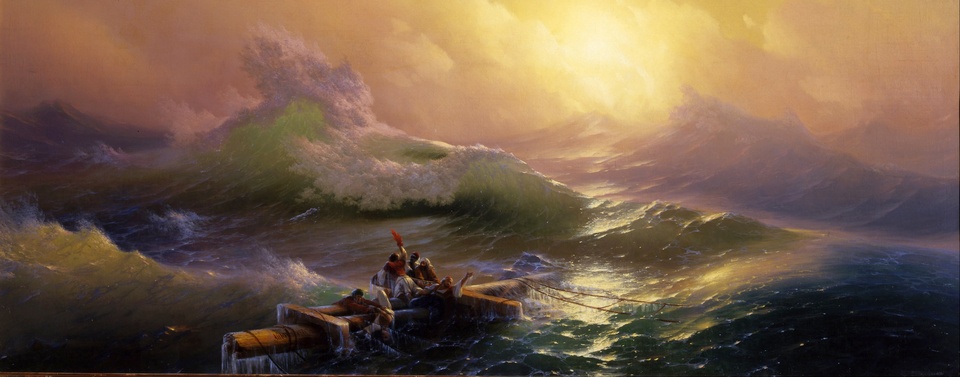
Many other poets, painters and composers have found inspiration from the sea. The 19th century Russian painter Ivan Aivazovsky is renowned for his brilliant technique of captivating marine landscapes and seascapes. Delius wrote a lovely orchestral piece called Sea Drift and both Britten and Elgar used sea themes. Vaughan Williams wrote A Sea Symphony and the lesser-known Granville Bantock composed a Hebridean Symphony. Mendelssohn wrote The Hebrides overture after a rather choppy sea journey to the Scottish island of Staffa. Both he and Beethoven wrote works called Calm Sea and Prosperous Voyage, inspired by a poem written in 1795 by the German poet Johann Wolfgang von Goethe. In 1905, Debussy completed his majestic three symphonic sketches for orchestra entitled La Mer (The Sea) which was also inspired by a rough sea voyage. Debussy completed the work not in France as you might expect, but on holiday at the Grand Hotel in the seaside town of Eastbourne on the English Channel coast.

Frank Bridge (1879-1941): Symphonic Tone Poem “The Sea”. Frankfurt Radio Symphony cond. Alain Altinoglu (Duration: 21:43; Video: 1080p HD)
Whether by coincidence or intention, Frank Bridge also completed this magnificent evocation of the sea at Eastbourne in 1911, six years after Debussy had finished La Mer in the same town. Bridge was born further along the coast in Brighton and later lived in London’s up-market Bedford Gardens, a pleasant but otherwise unremarkable residential street in Kensington. These days we hear little of Frank Bridge’s music, partly because there isn’t very much of it to hear. Unlike some of his contemporaries, Bridge was not especially interested in large conventional orchestral works. There are no symphonies nor concertos but mostly smaller scale works, chamber music and pieces for voice and piano. Benjamin Britten, whom Bridge taught privately, had enormous respect for him as a teacher and composer and paid homage to him in the work for string orchestra entitled Variations on a Theme of Frank Bridge.
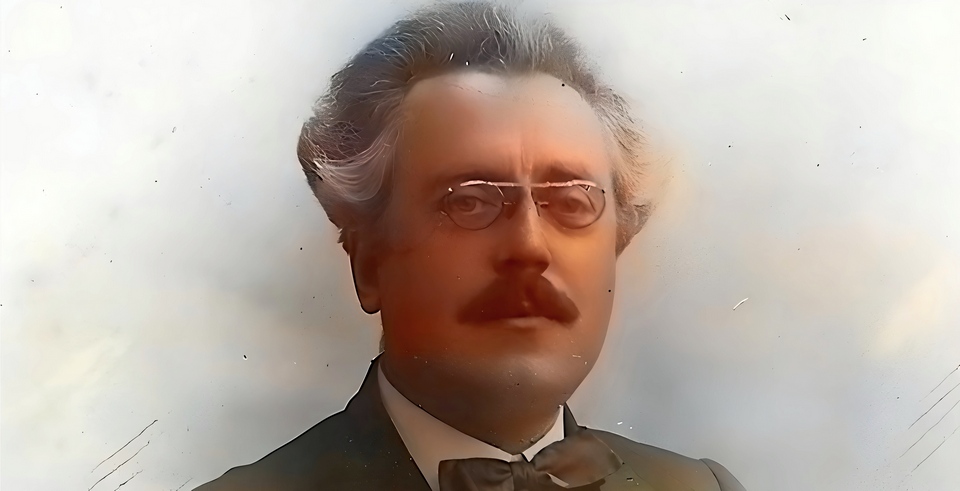
The Sea was completed in 1911 and eventually became one of Bridge’s most popular orchestral works, receiving frequent performances at the Henry Wood Promenade Concerts during his lifetime. Bridge’s superb orchestration skills are obvious. The first movement is entitled Seascape and there’s a distinct “Englishness” to the music which has an epic quality and beautiful transparent orchestration. The second movement (Sea Foam) scampers playfully along and the music develops into a middle section of greater expression. A lonely clarinet solo opens the third movement (Moonlight) and the music wanders through expressive harmonic shifts. Of this movement, Frank Bridge wrote “A calm sea at night…the first moonbeams are struggling to pierce through dark clouds, which eventually pass over, leaving the sea shimmering in full moonlight”. The fourth movement (Storm) opens with a menacing roll from the timpani and contains evocations of wind, rain and tempestuous seas, the horn section playing a dramatic part in the music. But then there is a lull in the storm and a telling fragmentary melody from the cor anglais leads into a few dreamy reflective moments before the heroic closing bars bring the music to a triumphant close in the bright, radiant key of E major.
Carl Nielsen (1865-1931): An Imaginary Trip to the Faroe Islands. Arenberg Symphony Orchestra and the Student Orchestra of the Conservatory of Music, University of Costa Rica, (Duration: 10:21; Video: 1080p HD)
Can you remember where the Faroe Islands are? You can probably guess that they’re up in the North Sea somewhere, and you’d be right. Although the Faroes are part of the Kingdom of Denmark, the islands (which are technically an archipelago) are geographically much closer to Britain and dominated by fjords and cliffs with sparse vegetation. Because of their closeness to the Arctic Circle, the islands are bathed in perpetual twilight during the summer nights. Most visitors go by air, but you can do what Nielsen imagined and take a ferry from the northern Danish port of Hirtshals. However, parts of the North Atlantic are some of the stormiest places in the world. The ferry company website states that the voyage to the Faroe Islands takes at least eight hours, adding with breath-taking understatement, “the swells and waves of the North Atlantic can be unpredictable and unsettling.”
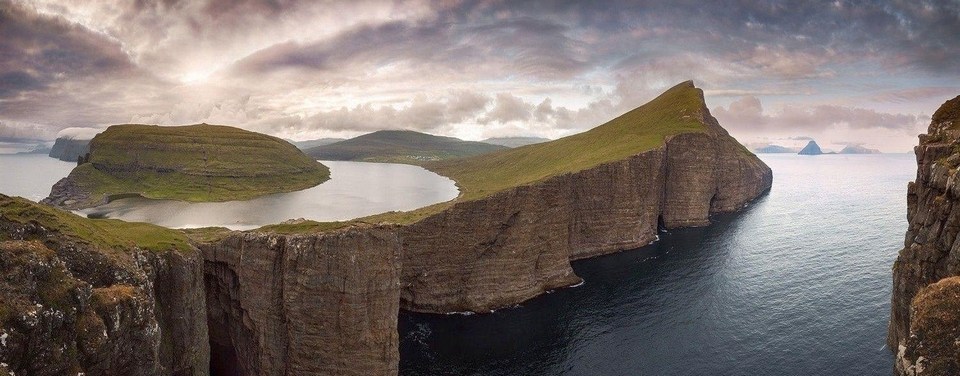
Today, Nielsen’s symphonies, concertos and choral music are now internationally acclaimed yet this delightful short piece could hardly be more different in style. It was commissioned in 1927 by The Royal Danish Theatre in Copenhagen to mark a Faroese gala at which many islanders would be present. In a newspaper interview, the composer said that he had used many Faroese melodies in the work, but the introduction and ending were his own. “I begin,” he explained, “by describing the sea, as you feel it during the crossing – the monotonous mighty sea. It is quiet, but I think that it is precisely when the sea is calm that you most strongly sense its terrible depth… its depth and endlessness at the same time.” Nielsen also explained that he was “no great lover of programme music” but it seemed especially appropriate for this occasion. The movements are entitled (1) The Calm Sea (2) The Land on Arrival (3) Dancing and Singing (4) Farewell (5) Calm at Sea.
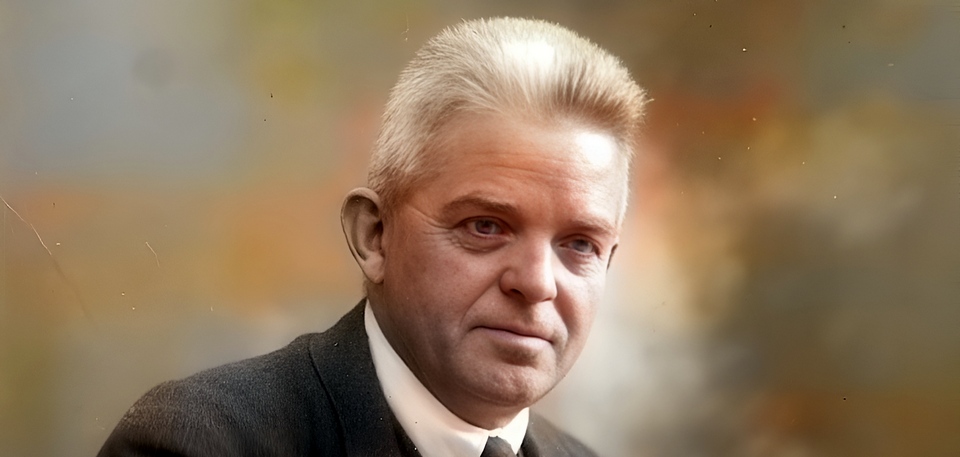
This work is much “lighter” in style than Bridge’s tone poem; it’s rather whimsical and jolly and quite unlike Nielsen’s more serious symphonic music. The work opens with a noble hymn-like melody first played on the horns and then repeated by the full orchestra. After that, it’s mostly about folk songs and dances and would probably have been a great success with the visiting Faroese for whom it was intended.
Curiously, there were only two performances of the work during Nielsen’s lifetime. It would have given me immense satisfaction to inform you that Nielsen also composed this work in Eastbourne. But he didn’t.
